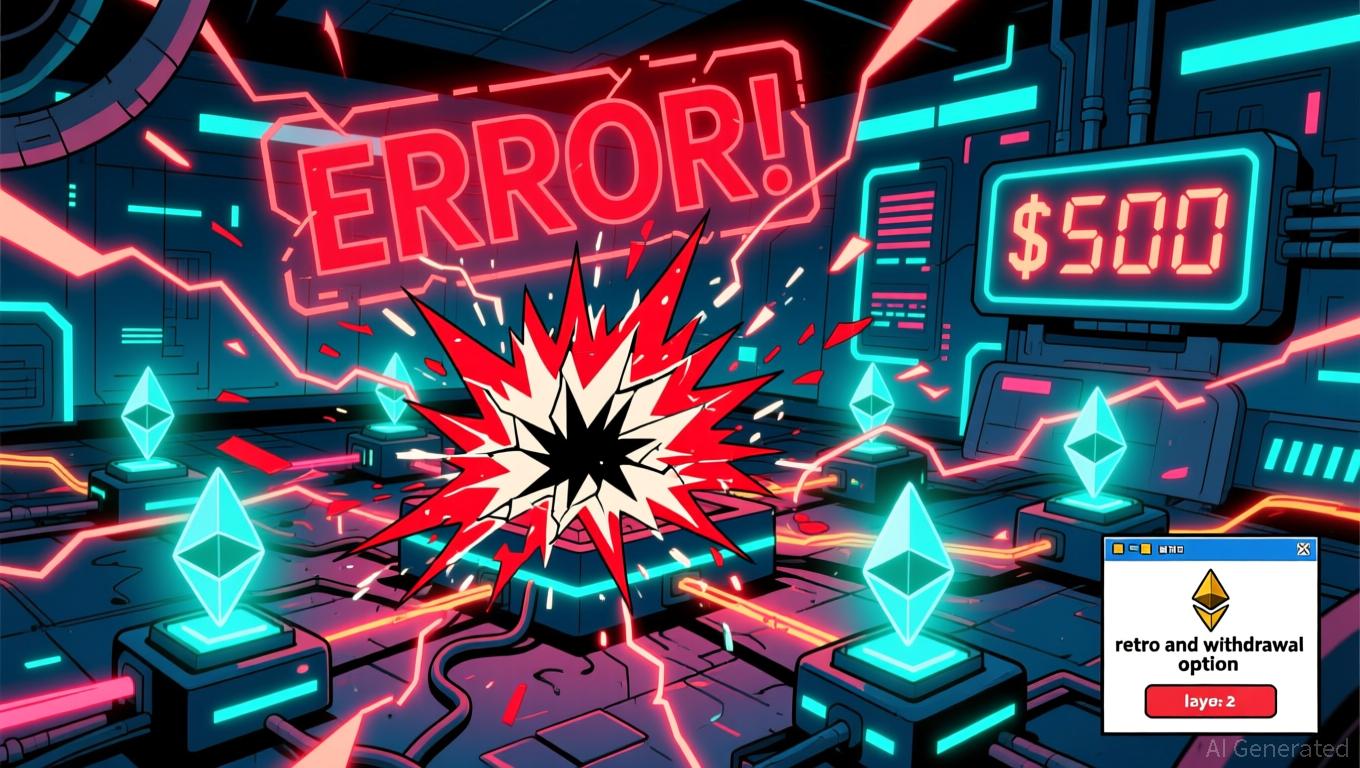The MMT Token TGE and What It Means for New Blockchain Ventures
- 2025 blockchain industry faces dual narratives: institutional-grade innovation (MMT Token) and speculative chaos (Melania Meme Token). - MMT Token (Sui-based) gains institutional backing and regulatory alignment, using buybacks/burns to stabilize liquidity and attract $12B DEX volume. - Melania MMT collapses 99% due to centralized control (89% supply in single wallet), exposing risks of governance flaws and regulatory scrutiny. - Emerging projects must prioritize compliance, sustainable tokenomics, and r
By 2025, the blockchain sector is defined by two contrasting themes: advanced institutional progress and rampant speculative activity. The
The MMT Token TGE: Institutional-Grade Advancement
The MMT Token TGE, operating on the
Performance indicators further validate its achievements:
Speculative Token Dangers: The Melania
Meme
Token (MMT)
On the other hand, the Melania Meme Token (MMT) illustrates the dangers of speculative memecoins. After briefly reaching $13.73 in 2025, its value plummeted by more than 99% to $0.1004, largely due to centralized ownership (with 89% of tokens in one wallet) and a lack of transparent governance
The existence of both MMT tokens reflects a broader pattern in the industry: while institutional DeFi and tokenized real-world assets (RWAs) are gaining momentum, speculative ventures remain at risk due to market mood swings and poor governance.
Takeaways for New Blockchain Initiatives
For startups, the contrasting stories of the MMT Token TGE and its
Second, sustainable tokenomics are crucial. The MMT Token’s buyback and burn approach is intended to manage supply and volatility, a tactic that new projects can adopt to create more stable ecosystems. In contrast, the Melania Meme Token’s concentrated ownership highlights the importance of open, decentralized governance
Third, strong technical infrastructure is indispensable. The MMT Token’s deployment on Sui’s high-performance blockchain demonstrates the value of scalable and interoperable platforms for real-world use cases
Looking Ahead: Merging Innovation with Regulation
Although the MMT Token TGE highlights blockchain’s transformative potential for finance, it also reveals the sector’s significant risks. For new ventures, the post-MMT environment requires a careful balance: harnessing advanced technology, meeting regulatory demands, designing tokenomics for lasting value, and ensuring transparency to foster trust.
Investors, for their part, should evaluate TGEs with these factors in mind. Projects that emphasize compliance, institutional alliances, and resilient tokenomics—like the MMT Token—are better positioned to weather market turbulence and regulatory challenges. In contrast, those that depend on hype and centralized power, as with the Melania Meme Token, will struggle to gain credibility.
As 2025 unfolds, the blockchain world faces a pivotal moment. The stories of the MMT Token TGE and its speculative counterpart show that true success depends not only on technological breakthroughs, but also on meeting the rising expectations of a more mature market.
Disclaimer: The content of this article solely reflects the author's opinion and does not represent the platform in any capacity. This article is not intended to serve as a reference for making investment decisions.
You may also like
Bitcoin Updates Today: Bitcoin's Volatility: Surrender or Endurance from Institutions?
- Bitcoin's recent price drop and negative funding rates suggest market capitulation, with open interest collapsing 32% since late October 2025. - Institutional holdings like KindlyMD's $681M BTC stash and Harvard's ETF investments highlight growing long-term confidence in Bitcoin's stability. - Q3 2025 crypto VC surged 290% to $4.65B, while experts diverge: Standard Chartered targets $200K BTC by year-end, Kraken predicts $80K–$100K consolidation. - Macro risks including Japan's reserve rules and AI-drive

MegaETH's $500 Million Technical Issues Underscore DeFi's Ongoing Challenges with Maturity
- MegaETH abandoned plans to expand its $250M token sale after technical failures froze deposits at $500M and triggered unintended transactions. - The protocol announced retroactive compensation for affected users but faced criticism over preventable errors in KYC systems and multisig execution. - The incident highlights DeFi's operational challenges, contrasting with Aztec's success in achieving full decentralization with 525 validators. - Critics argue such missteps risk eroding trust in protocols promis

Paxos Combines Regulated Asset Storage with DeFi Protection Through Fordefi Acquisition
- Paxos acquires Fordefi for over $100M to enhance DeFi custody solutions via MPC wallet integration. - The deal combines Fordefi's institutional-grade security with Paxos' regulated infrastructure for on-chain transaction management. - This marks Paxos' second major acquisition in 2024, following Membrane Finance, as DeFi protocols hold $116B in total value locked. - The move aligns with global regulatory shifts toward DeFi oversight and growing institutional demand for secure crypto infrastructure.
Ambition Surpasses Action as MegaETH's $1 Billion Fundraising Effort Falls Apart
- MegaETH abruptly canceled its $1B token sale after technical failures caused a $500M deposit surge beyond the $250M cap. - KYC system malfunctions and premature multisig execution exposed critical operational vulnerabilities in the project's infrastructure. - While no assets were lost, the incident sparked criticism over preventable errors and raised industry concerns about token sale readiness. - MegaETH faces credibility challenges as it scrambles to fix protocols and offer refunds, highlighting risks
